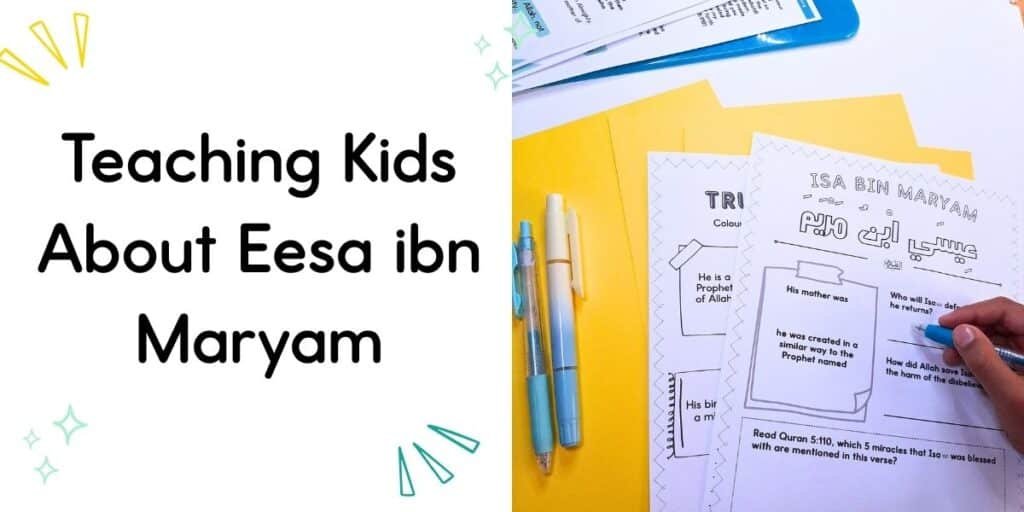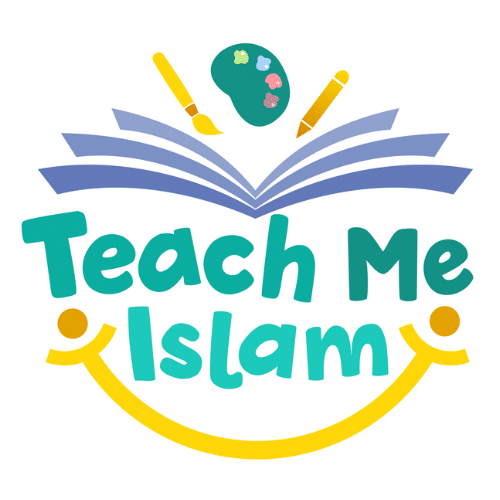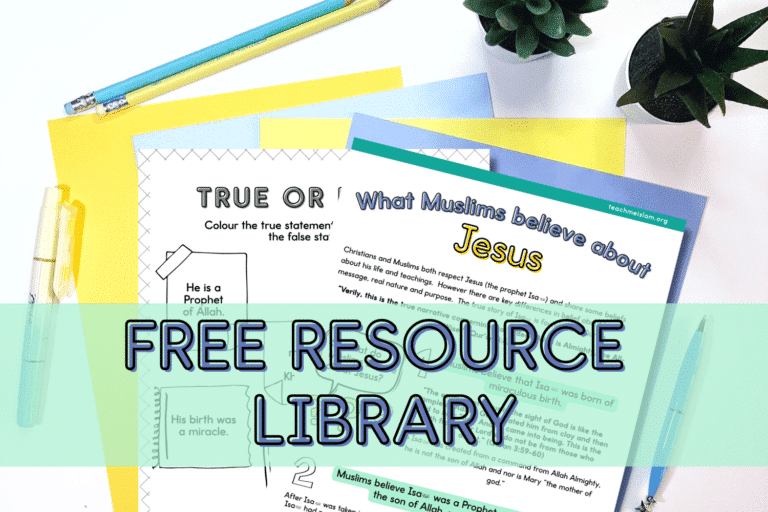Eesa ibn Maryam (Jesus) holds a deeply significant place in Islam, as one of the greatest prophets sent by Allah to guide humanity. For Muslim children, learning about Eesa is essential in helping them understand their faith and appreciate the important role he plays in our religion.
In a world where they will encounter various beliefs—especially the Christian narrative—it’s crucial to ensure that they learn about Eesa from authentic Islamic sources. By doing so, we can foster a deep love and respect for him as a prophet who was honoured by Allah.
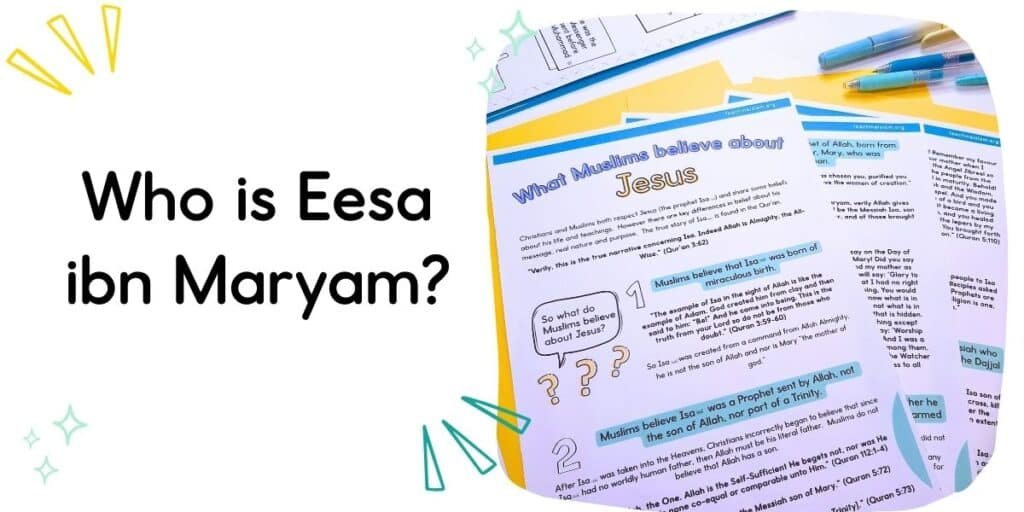
Who is Eesa ibn Maryam?
In Islam, Eesa ibn Maryam is one of the greatest Prophets sent by Allah to guide the Children of Israel. His name literally means “Jesus, son of Mary,” which highlights his miraculous birth. Unlike the Christian belief, Muslims do not view Eesa (Jesus) as the son of God, but rather as a Prophet, servant of Allah, and one of the mightiest messengers.
Eesa ibn Maryam is mentioned numerous times in the Quran, where he is honoured as a beloved Prophet, and his mother, Maryam (Mary), is considered one of the greatest women in Islam. Teaching our children the story of Eesa from an Islamic perspective helps them understand the similarities and differences in how Muslims and Christians view him. It also allows them to build a strong foundation in their Islamic identity and values.
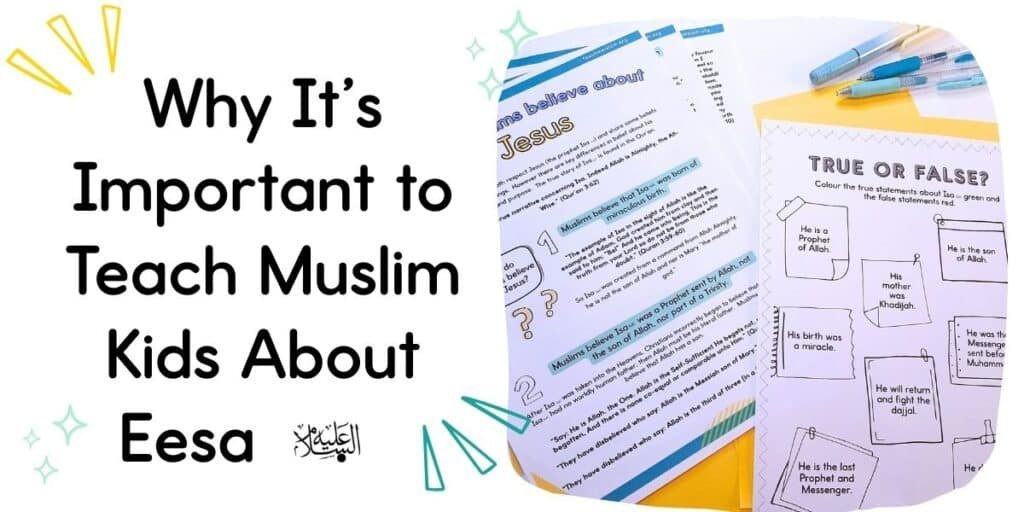
Why It’s Important to Teach Muslim Kids About Eesa ibn Maryam
- One of the Greatest Prophets: Eesa ibn Maryam is one of the five greatest prophets in Islam (Ulul Azm), alongside Nuh (Noah), Ibrahim (Abraham), Musa (Moses), and Muhammad (peace be upon them all).
- Miraculous Birth: Eesa was born to Maryam (Mary) without a father, by the will of Allah. His birth is a miracle emphasized in both Surah Maryam and Surah Al-Imran in the Quran.
- Performs Miracles by Allah’s Will: He healed the sick, brought the dead back to life, and spoke from the cradle—all by Allah’s permission.
- Not Divine: Unlike Christian beliefs, Islam teaches that Eesa is not divine or the son of God, but rather a servant of Allah and His messenger.
- Raised to the Heavens: Muslims believe that Eesa was not crucified but was raised to the heavens by Allah, and he will return at the end of time.
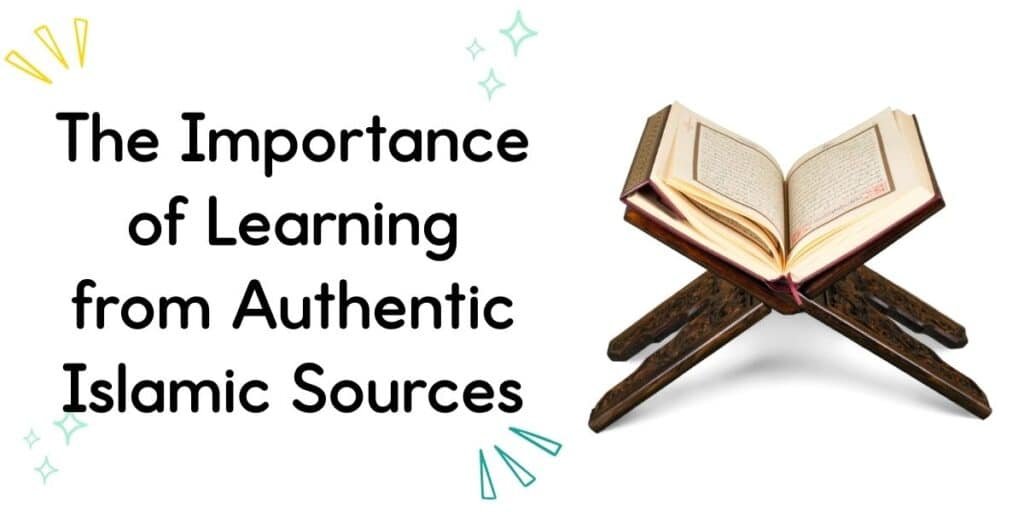
The Importance of Learning from Authentic Islamic Sources 📚
Our children will likely encounter different stories and representations of Jesus, especially through media or interactions with Christian peers. This makes it even more important that they:
- Understand the Islamic narrative of Eesa ibn Maryam.
- Recognize that Eesa is a prophet in Islam and not just a figure in Christianity.
- Develop a love and respect for Eesa as a significant part of their Islamic identity.
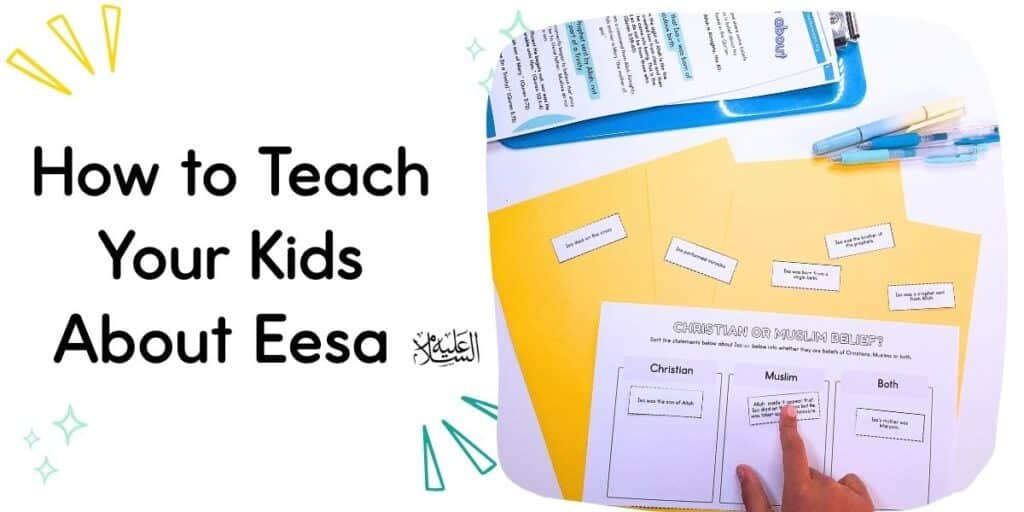
How to Teach Your Kids About Eesa ibn Maryam
- Start with the Quran 🕋
Read verses from Surah Maryam and Surah Al-Imran to introduce Eesa’s miraculous birth, life, and miracles. These chapters beautifully convey his story from an Islamic perspective.
Key lessons include:
- His miraculous birth to Maryam.
- His ability to speak as a baby to defend his mother.
- The miracles he performed, all by the will of Allah.
- Discuss the Role of Maryam (Mary)
Teach your children about Maryam’s piety, modesty, and faith. She is a role model in Islam, not just as the mother of Eesa, but as one of the greatest women that ever lived.
Ibn `Abbas said: the Messenger of Allah (peace and blessings of Allah be upon him) drew four lines on the ground, then he said, “Do you know what this is?” We said, “Allah and His Messenger know best.” The Messenger of Allah (peace and blessings of Allah be upon him) said: “The best of the women of Paradise are Khadijah bint Khuwaylid, Fatimah bint Muhammad, Asiyah bint Muzahim (the wife of Pharaoh), and Maryam bint ‘Imran – may Allah be pleased with them.” (Narrated by Ahmad, 2663. Classed as sahih by al-Albani in Sahih al-Jami’, 1135)
- Compare the Islamic & Christian Narratives ✨
Help your children understand the differences in how Muslims and Christians view Eesa ibn Maryam. Explain that while both faiths respect him, in Islam, he is not divine and was not crucified.
- Highlight Key Islamic Values
Use Eesa’s story to teach your children:
- Humility: Despite his miraculous abilities, Eesa remained humble.
- Compassion: He cared for the sick and the poor, embodying mercy and kindness.
- Trust in Allah: Eesa had unwavering faith in Allah’s plan.
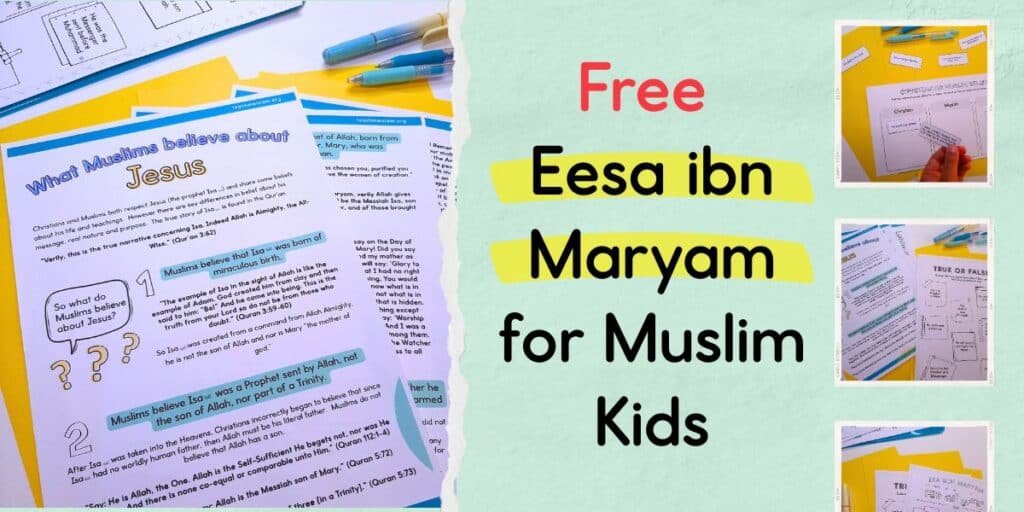
Encourage Further Learning 💡
To reinforce the story, you can use our FREE Eesa ibn Maryam Resource and Worksheet Pack. It includes:
- Engaging activities
- Summaries of key points
- Questions to help solidify the lessons learned
👉 [Get the FREE Eesa ibn Maryam Resource Pack Here!]
Free resources to help you teach kids
I hope you have found these suggestions for teaching your kids about Eesa bin Maryam useful. If you would like to gain access to the free resource library full of varied resources to help you teach your child then sign up HERE.
If you are interested in a leaflet to share with an adult who might be interested in the Islamic perspective on Eesa ibn Maryam then you can download one here.

